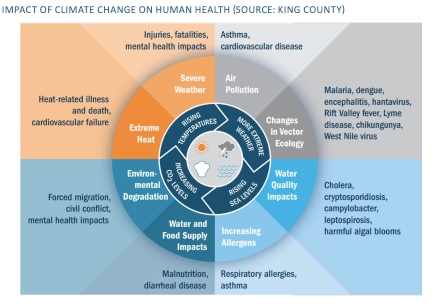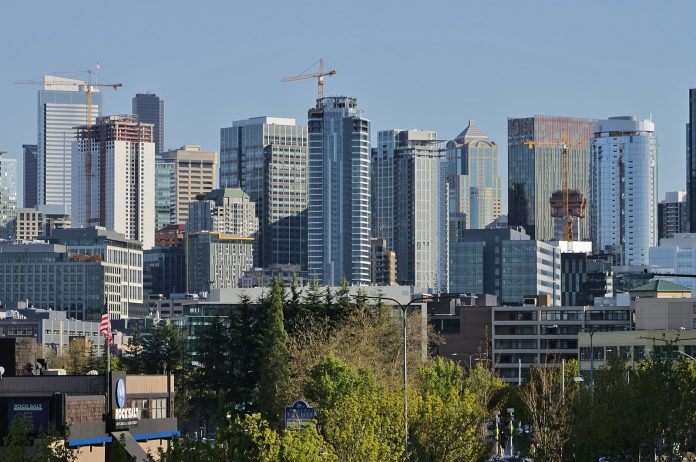Racial equity and resilience were not prioritized highly enough pre-Covid. The Seattle Planning Commission wants to ensure the Covid recovery achieves positive results for marginalized communities.
It is often said that a rising tide lifts all boats; however, the starkly unequal recovery that followed the Great Recession proved to debunk this adage, raising questions over how economic recovery can serve more than the affluent. Now as people look anxiously forward to a recovery from the current Covid crisis, government leaders, policy makers, and advocates are beginning to strategize over how to increase racial equity and build community resiliency during the recovery.
While many of us yearn for a return to “normal” life–one that does not include video call meetups with friends who live in your zip code or juggling full-time remote work with virtual schooling for your kids–it is important to remember that prior to the arrival of Covid, our “normal” life in the Seattle area included a homelessness state of emergency that has only worsened since being declared in 2015. Homelessness represents only the most visible tip of an iceberg of inequality that has disproportionately impacted Black, Indigenous, and people of color (BIPOC) communities.
Even when considering best case scenarios related to vaccine creation and distribution, we are still a ways off from recovery from Covid. While this can feel discouraging, one thing a long anticipated recovery can offer is the opportunity to plan ahead, thoughtfully with an eye toward making changes.
“It’s really easy to fall back to the way we were doing things before–but now we have to think differently about things like public space, housing, and office space. How do we not go back to normal?” said Sam Assefa, Director of Seattle’s Office of Community Planning and Development, in an interview with the American Planning Association.
How does the Seattle Planning Commission envision an equitable recovery?
The Seattle Planning Commission (SPC), a 16-member volunteer body appointed by the Mayor and City Council, was ahead of the curve in 2018 when they published Neighborhoods for All, a must-read guide (summary here) for how to use flexible zoning in single-family neighborhoods to promote economic and racial diversity in Seattle neighborhoods, and now SPC has recently released a new publication: A Racially Equitable and Resilient Recovery.

The guide is centered on five key areas to prioritize during recovery planning, which include:
- Working in collaboration with BIPOC communities to create a planning process that shares power with communities: To promote power sharing, SPC encourages the city “indigenize” the planning process by adopting “more practices based on indigenous principles that create self-determination for BIPOC communities, emphasizing holistic wellbeing and authentic relationships.” One way to start this process would be to update the City’s Racial Equity Toolkit to include indigenous practices in project and policy development. SPC also advocates for engaging in participatory budgeting to create a more inclusive City budget, committing to longterm engagement with BIPOC communities with a focus on following through on visions and plans, and adapting language around planning efforts to eliminate white-centered terminology and alienating jargon.
- Advancing housing choices and security in response to COVID-19 while expanding homeownership opportunities for BIPOC communities: In addition to changing zoning to allow for more diverse housing types to built in single-family zoned areas, SPC also encourages the City to extend its current eviction moratorium, which currently runs through December, increase funding for land trusts and limited equity cooperatives to increase access to affordable ownership housing to lower- and middle-income Seattleites, and leverage the economic opportunity from new work from home arrangements by creating and expanding neighborhood commercial areas with local retail, cafes, restaurants, small-scale office, co-working spaces and spaces for childcare.
- Maintaining the critical transit network and ensure City rights-of-way meets safety and open-space needs for BIPOC communities: In the near term, SPC promotes preserving and expanding the Seattle’s transit network, especially buses and bus ways, which support essential workers who rely on transit. Additionally, SPC recommends moving beyond Stay Healthy Streets, which were largely converted from existing neighborhood greenways on quiet streets adjacent to single family residences. Conversations with BIPOC communities could help identify ideas for how to bring the benefits of Stay Healthy Streets to more neighborhoods with busier streets and more multifamily housing. Lastly, SPC recommends opening up more cafe streets expand opportunities to safely recreate outside while also demonstrating to people how right-of-way can be reallocated for uses not dedicated to vehicle transportation.
- Ensuring public spaces work for everyone by centering and implementing BIPOC visions for the public realm: Acknowledging the Euro-centric thinking that dominates much of an urban planning culture, SPC challenges Seattle to explore how the public realm is used in a more diverse array of settings and to seek out inspiration for alternatives that reflect the city’s cultural diversity. It also calls for “interrogating” crime prevention tactics, like Crime Prevention Through Environmental Design, which has faced criticism over negative impacts to Black communities, and also supporting innovative ways to increase access to hygiene, such as Clean Hands Collective, which has created three community financed, DIY hand washing stations.
- Investing equitably in healthy and climate-resilient communities: According to SPC, “because the dominant ideology that justifies harms to people and the environment have the same origin, neither climate change nor racial injustice can be solved independently.” SPC suggest combatting both problems by increasing funding for climate change education and public health data collection, investing in racially equitable green jobs to widen opportunity, and building climate ready infrastructure to increase climate resilience.

SPC has created a thoughtful compilation of ideas for how Seattle can work to achieve a racially equitable and resilient recovery; however, the document largely refrains from acknowledging the financial reality of the Covid recession, which might prove to be even more disastrous to city budgets than the Great Recession was. At least in the short term, it might not be realistic for the City to be able to finance projects like incorporating indigenous practices into its Race and Equity Toolkit, especially if the City is still struggling to meet residents’ basic needs- such as supporting adequate numbers of sanitation stations for homeless people, for example.
Nonetheless, leaders are at a critical moment in which they can begin making decision that will impact how the recovery will eventually unfold, and the choices they make now could be the basis for a creating a more racially equitable and resilient concept of normalcy in Seattle.
Natalie Bicknell Argerious (she/her) is a reporter and podcast host at The Urbanist. She previously served as managing editor. A passionate urban explorer since childhood, she loves learning how to make cities more inclusive, vibrant, and environmentally resilient. You can often find her wandering around Seattle's Central District and Capitol Hill with her dogs and cat. Email her at natalie [at] theurbanist [dot] org.


